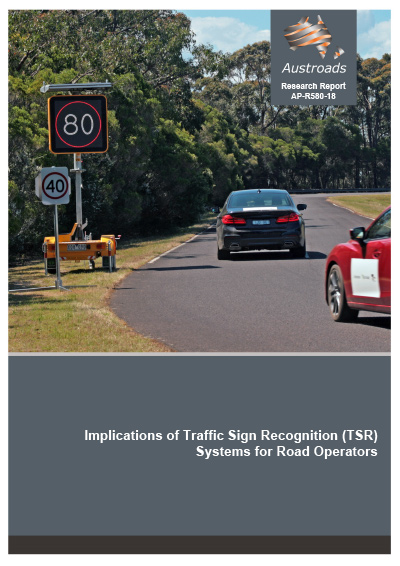Wednesday, 22 August 2018

Austroads has published a report that investigates the changes needed to the design, placement and maintenance of traffic signs to optimise the outcomes from the introduction of Traffic Sign Recognition systems in Australian and New Zealand.
Traffic Sign Recognition (TSR) is in-vehicle technology which attempts to read and interpret roadside traffic signs.
Vehicle manufacturers are moving towards enabling speed assistance and automated driving using TSR systems and the benefits of successful introduction are likely to be significant for road safety.
The project included:
- a literature review relating to TSR systems and Australian and New Zealand road signage
- stakeholder interviews with vehicle manufacturers and key technical committees for traffic signs
- on-road and off-road evaluations.
The on-road trials, conducted on motorways and local roads in Melbourne, Sydney and Auckland, were vital to understanding and capturing variations in signs and sign scenarios such as vehicle mounted signs, motorway gantries, and roadworks zones. A range of modern makes and models of vehicles were used to ensure consistent results could be identified which were not specific to one make or brand of vehicle.
The off-road trials were conducted at the Australian Automotive Research Centre where a range of scenarios were tested which could not be easily replicated in the real world. These off-road trials also allowed vehicle manufacturers to provide pre-release vehicles for testing, which could not otherwise be used in trials on public roads.
Off-road testing also allowed the raw data feed from the TSR technology to be isolated from other data which is combined in a speed assistance system. Modern speed assistance systems combine inputs from both spatial databases and TSR which proved problematic in testing vehicles on-road.
Key findings include:
- Electronic signs could not be consistently read by TSR systems including gantry mounted signs.
- Variation from the core Australian and New Zealand standards and the placement of signs near motorways, such as on side roads or offramps, are key issues.
- Many Australian and New Zealand advisory signs are mistaken for statutory signs and qualifications placed on the signs are ignored.
- Advisory/information signage or control signs cannot be read by TSR systems, although it is intended that they will be in future.
- The regulatory significance of signs will mean most vehicle manufacturers will continue to rely on them as their source of ‘ground truth’ for speed assistance and automated driving systems. However, spatial databases of speed zones will continue to supplement TSR systems, and well maintained databases will remain important.
The report concludes with specific recommendations for changes to enhance traffic sign readability across electronic signs, installation and maintenance, sign positioning and location, sign face design, vehicle mounted signs, and other advisory and information signs.
Report Link: Implications of Traffic Sign Recognition (TSR) Systems for Road Operators
